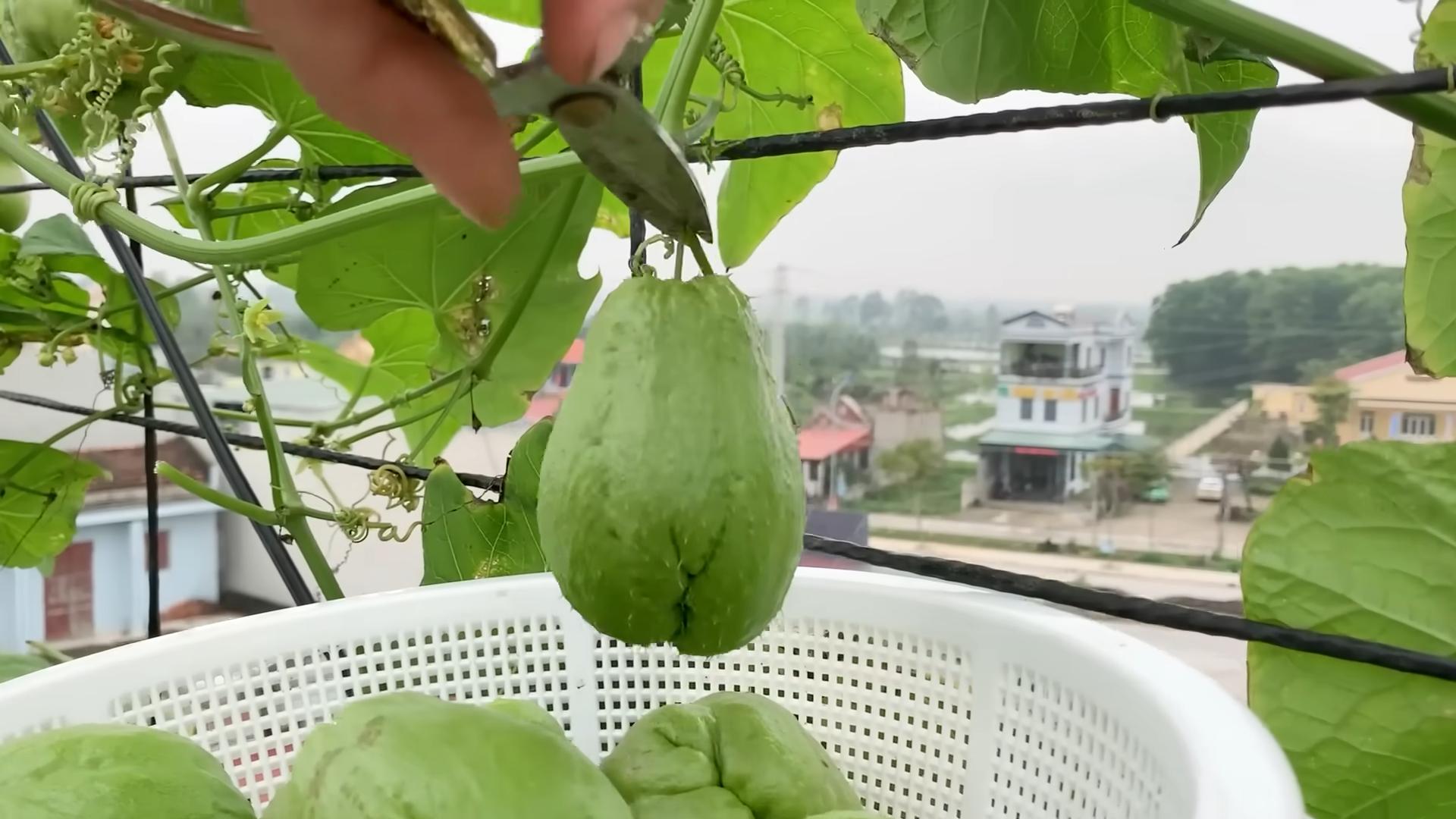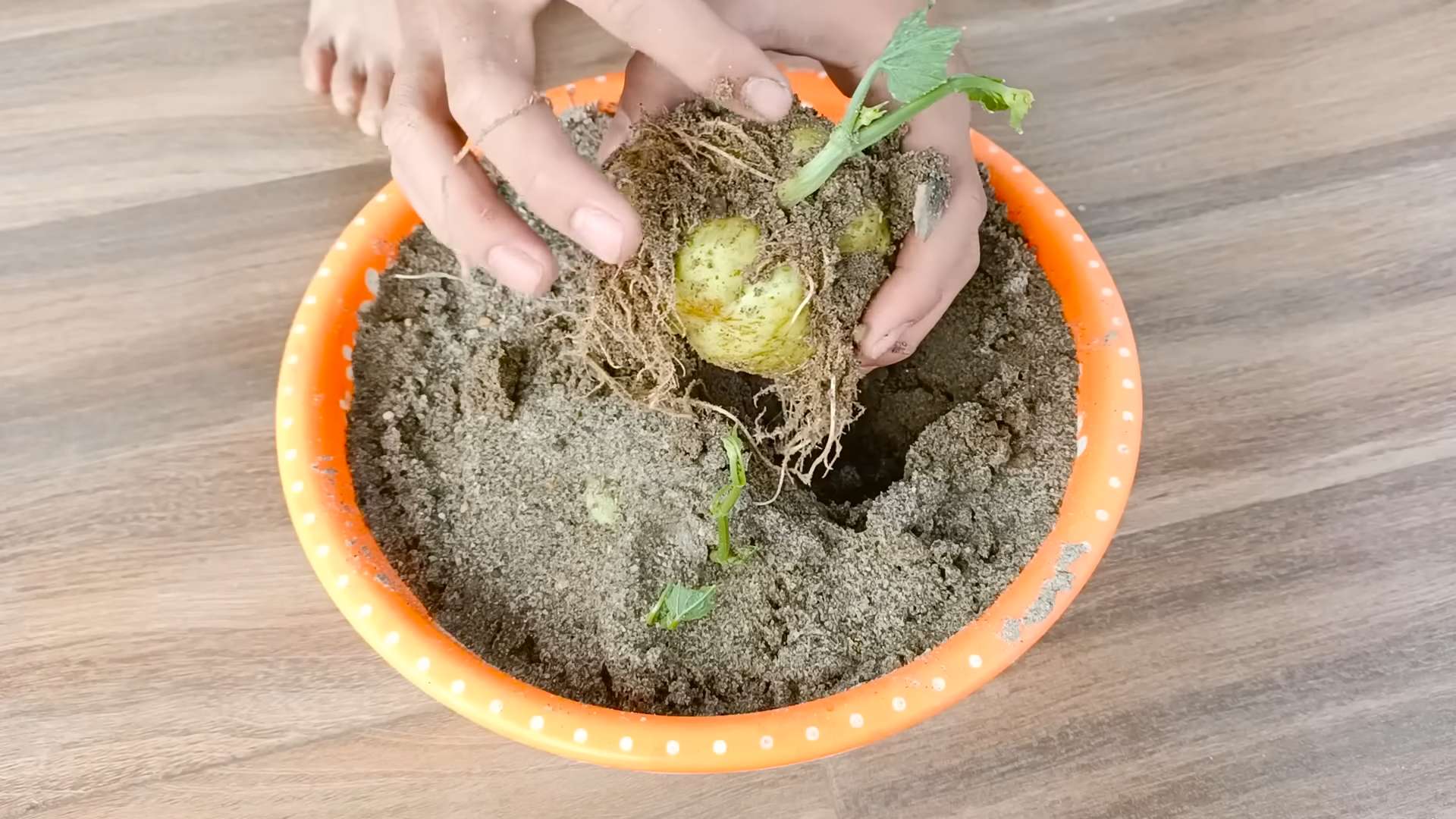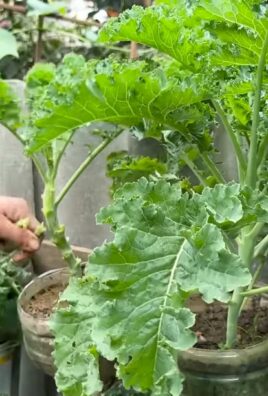Rooftop gardening with chayote might sound like an exotic dream, but trust me, it’s more achievable than you think! Imagine stepping onto your roof and harvesting fresh, crisp chayote squash – a taste of the tropics right in your own urban oasis. For centuries, chayote, also known as mirliton, has been a staple in Mesoamerican cuisine, prized for its versatility and nutritional value. From soups and salads to stir-fries and even desserts, this humble squash can do it all.
But why should you consider rooftop gardening with chayote? Well, for starters, it’s a fantastic way to maximize space, especially if you’re living in an apartment or have a small yard. Plus, growing your own food is incredibly rewarding! There’s nothing quite like the satisfaction of nurturing a plant from seed to harvest. And let’s be honest, who wouldn’t want to impress their friends and family with a homegrown chayote dish?
This DIY guide is your key to unlocking the secrets of successful rooftop gardening with chayote. We’ll walk you through everything from choosing the right container and soil to providing the necessary support for this vigorous vine. Get ready to transform your rooftop into a thriving edible landscape!

DIY Rooftop Chayote Garden: From Seed to Supper!
Okay, so you want to grow chayote on your rooftop? Awesome! It’s a fantastic vine, produces tons of delicious fruit, and is surprisingly easy to manage once you get the hang of it. I’m going to walk you through everything you need to know, from sprouting the seed to harvesting your bounty. Get ready to have a green, thriving chayote paradise right above your head!
What You’ll Need
Before we dive in, let’s gather our supplies. This will make the whole process smoother and less stressful. Trust me, nothing’s worse than realizing you’re missing something halfway through!
* Chayote Fruit with Sprouted Seed: This is the most important ingredient! You can usually find these at your local grocery store or farmers market, especially in the fall. Look for a fruit that already has a sprout emerging from the bottom. If you can’t find one with a sprout, don’t worry, I’ll show you how to encourage sprouting.
* Large Container(s): Chayote vines are vigorous growers, so you’ll need a large container, at least 20 gallons in size. Think big! A half wine barrel or a large plastic tub works great. Make sure it has drainage holes.
* High-Quality Potting Mix: Don’t skimp on the potting mix! Use a well-draining mix that’s rich in organic matter. A mix designed for vegetables is ideal.
* Trellis or Support Structure: Chayote vines need something to climb on. A sturdy trellis, fence, or even a strong pergola will work. The bigger the better, as these vines can get quite long.
* Gardening Gloves: Protect your hands!
* Watering Can or Hose: For regular watering.
* Fertilizer: A balanced, slow-release fertilizer or organic fertilizer.
* Pruning Shears: For trimming the vine as needed.
* Optional: Compost or Worm Castings: To enrich the soil.
Phase 1: Sprouting the Chayote
This is arguably the trickiest part, but don’t be intimidated! With a little patience, you’ll have a healthy sprout ready to plant.
1. Inspect the Chayote: If your chayote already has a sprout, great! Skip to step 3. If not, examine the bottom of the fruit. You should see a slightly softer area where the sprout will emerge.
2. Encouraging Sprouting (If Needed): If there’s no sprout, you can encourage it by placing the chayote in a partially submerged position. Here’s how:
* Find a container that’s slightly smaller than the chayote fruit.
* Fill the container with about an inch or two of water.
* Place the chayote fruit in the container, with the bottom (the softer area) submerged in the water.
* Place the container in a warm, bright location, but out of direct sunlight.
* Change the water every few days to prevent mold growth.
* Be patient! It can take several weeks for a sprout to emerge. Keep the bottom of the fruit moist.
3. Preparing the Sprouted Chayote: Once you have a sprout that’s a few inches long, it’s time to get ready for planting.
* Gently handle the chayote to avoid damaging the sprout.
* You can leave the chayote fruit whole; it will provide nutrients to the plant as it grows.
Phase 2: Planting Your Chayote
Now for the fun part – getting your chayote into its new home!
1. Prepare the Container:
* Ensure your container has adequate drainage holes.
* Fill the container with your high-quality potting mix, leaving a few inches of space at the top.
* If you’re using compost or worm castings, mix them into the top layer of the soil.
2. Planting the Chayote:
* Dig a hole in the center of the container that’s large enough to accommodate the chayote fruit.
* Gently place the chayote fruit in the hole, with the sprout pointing upwards.
* Cover the fruit with soil, leaving the top of the fruit and the sprout exposed.
* Water thoroughly after planting.
3. Setting Up the Trellis:
* Position your trellis or support structure near the container.
* As the vine grows, gently guide it towards the trellis and encourage it to climb. You can use soft twine or plant clips to help secure it.
Phase 3: Caring for Your Chayote Vine
Consistent care is key to a healthy and productive chayote vine.
1. Watering:
* Chayote vines need consistent moisture, especially during the growing season.
* Water deeply whenever the top inch of soil feels dry to the touch.
* Avoid overwatering, as this can lead to root rot.
* Reduce watering during the dormant season (winter).
2. Fertilizing:
* Feed your chayote vine with a balanced fertilizer every few weeks during the growing season.
* Follow the instructions on the fertilizer package.
* You can also use organic fertilizers like compost tea or fish emulsion.
3. Sunlight:
* Chayote vines need at least 6-8 hours of sunlight per day.
* Choose a location on your rooftop that receives plenty of sun.
4. Pruning:
* Pruning helps to control the size of the vine and encourages fruit production.
* Remove any dead or damaged leaves and stems.
* You can also prune back the vine to keep it from becoming too unruly.
* Prune lightly after harvesting the fruit.
5. Pest and Disease Control:
* Chayote vines are generally pest-resistant, but keep an eye out for common garden pests like aphids and spider mites.
* If you notice any pests, treat them with an organic insecticide like neem oil or insecticidal soap.
* Ensure good air circulation to prevent fungal diseases.
Phase 4: Harvesting Your Chayote
The moment you’ve been waiting for!
1. When to Harvest:
* Chayote fruits are typically ready to harvest in the fall, about 30-40 days after flowering.
* The fruits should be firm and light green in color.
* Harvest them when they are about 4-6 inches long.
2. How to Harvest:
* Use pruning shears or a sharp knife to cut the fruit from the vine.
* Leave a short stem attached to the fruit.
3. Storing Chayote:
* Chayote fruits can be stored in the refrigerator for several weeks.
* Wrap them in a plastic bag to prevent them from drying out.
Troubleshooting Tips
Even with the best planning, things can sometimes go awry. Here are a few common issues and how to address them:
* No Sprout: If your chayote isn’t sprouting, make sure it’s kept consistently moist and in a warm location. Sometimes, it just takes time. Try gently scoring the bottom of the fruit with a knife to help the sprout emerge.
* Yellowing Leaves: Yellowing leaves can indicate overwatering, underwatering, or nutrient deficiency. Check the soil moisture and adjust your watering accordingly. Fertilize with a balanced fertilizer.
* Lack of Fruit: Lack of fruit can be due to insufficient sunlight, poor pollination, or nutrient deficiency. Make sure your vine is getting enough sun and fertilize regularly. You can also try hand-pollinating the flowers by transferring pollen from the male flowers to the female flowers with a small brush.
* Pest Infestation: Treat pest infestations promptly with organic insecticides. Regularly inspect your vine for signs of pests.
Chayote Cooking Ideas
Now that you’ve harvested your chayote, what do you do with it? The possibilities are endless! Chayote has a mild flavor that makes it incredibly versatile.
* Sautéed Chayote: Simply slice or dice the chayote and sauté it with your favorite vegetables and seasonings.
* Chayote Soup: Add chayote to your favorite soup recipe for a healthy and delicious boost.
* Chayote Salad: Grate raw chayote into salads for a refreshing crunch.
* Stuffed Chayote: Hollow out the chayote and stuff it with meat, vegetables, or rice.
* Pickled Chayote: Pickle chayote for a tangy and flavorful condiment.
* Chayote Fries: Cut chayote into fries, season them, and bake or air fry them for a

Conclusion
So, there you have it! Transforming your rooftop into a thriving chayote haven is not just a whimsical dream, but a tangible reality within your reach. We’ve explored the ins and outs of rooftop gardening with chayote, from selecting the perfect spot to nurturing your plant to its full, bountiful potential. But why should you embark on this green adventure?
The answer is multifaceted. First and foremost, growing your own chayote offers unparalleled freshness and flavor. Imagine stepping onto your rooftop, plucking a perfectly ripe chayote, and incorporating it into your next meal. The taste difference compared to store-bought varieties is simply remarkable. Beyond the culinary benefits, rooftop gardening with chayote is an incredibly rewarding experience. It connects you with nature, provides a sense of accomplishment, and adds a touch of vibrant greenery to your urban landscape.
Furthermore, consider the environmental advantages. By growing your own food, you’re reducing your carbon footprint, minimizing reliance on industrial agriculture, and contributing to a more sustainable lifestyle. Chayote, in particular, is a fantastic choice for rooftop gardens due to its vigorous growth and relatively low maintenance requirements. It’s a resilient plant that can thrive in various conditions, making it an ideal option for both seasoned gardeners and beginners alike.
But the beauty of rooftop gardening lies in its adaptability. Feel free to experiment with different trellising methods. Instead of a traditional trellis, consider using repurposed materials like old ladders or metal fencing to create a unique and visually appealing structure. You can also explore companion planting to enhance the growth and flavor of your chayote. Basil, marigolds, and nasturtiums are excellent choices for deterring pests and attracting beneficial insects.
For those with limited space, consider growing chayote in large containers. Ensure the containers have adequate drainage and are filled with a well-draining potting mix. You can also train the vines to grow vertically along a wall or fence to maximize space utilization. And don’t forget to explore different chayote varieties! While the common green chayote is widely available, you might be able to find other varieties with unique shapes, sizes, and flavors.
Rooftop gardening with chayote is more than just a gardening project; it’s an investment in your health, your well-being, and the environment. It’s a chance to reconnect with nature, cultivate your own food, and transform your rooftop into a vibrant oasis.
So, what are you waiting for? Grab your gardening gloves, gather your supplies, and embark on this exciting journey. We’re confident that you’ll be amazed by the results. And once you’ve harvested your first chayote, be sure to share your experience with us! We’d love to hear your tips, tricks, and success stories. Share your photos and stories on social media using #RooftopChayoteGarden. Let’s inspire others to embrace the joys of rooftop gardening and create a greener, more sustainable world, one chayote at a time. We can’t wait to see your rooftop chayote gardens flourish!
Frequently Asked Questions (FAQ)
What are the ideal growing conditions for chayote on a rooftop?
Chayote thrives in warm climates with plenty of sunlight. Aim for at least 6-8 hours of direct sunlight per day. The ideal temperature range is between 65°F and 85°F (18°C and 29°C). Ensure your rooftop location is protected from strong winds, which can damage the vines. Good drainage is also crucial to prevent root rot. Use well-draining potting mix if growing in containers, and consider adding drainage layers to your rooftop garden beds.
How do I start a chayote plant? Can I grow it from seed?
Chayote is typically propagated from the whole fruit, not from individual seeds. Select a mature, unblemished chayote fruit. Place the entire fruit horizontally in a pot filled with moist potting mix, burying about two-thirds of the fruit. Keep the soil consistently moist but not waterlogged. Place the pot in a warm, sunny location. It may take several weeks for the fruit to sprout. Once the sprout has developed several leaves, you can transplant it to your rooftop garden. While technically you can extract the seed from a mature fruit, the success rate is much lower compared to planting the whole fruit.
What type of soil is best for rooftop gardening with chayote?
A well-draining, fertile soil is essential for healthy chayote growth. If you’re using containers, choose a high-quality potting mix specifically formulated for vegetables. Avoid using garden soil in containers, as it can become compacted and impede drainage. For rooftop garden beds, amend the soil with compost, aged manure, or other organic matter to improve drainage, fertility, and water retention. A slightly acidic to neutral pH (around 6.0 to 7.0) is ideal.
How often should I water my chayote plant on the rooftop?
Water your chayote plant regularly, especially during hot, dry weather. The frequency of watering will depend on the climate, soil type, and container size. Check the soil moisture regularly by inserting your finger about an inch deep. If the soil feels dry, it’s time to water. Avoid overwatering, as this can lead to root rot. Water deeply and thoroughly, allowing the water to drain out of the bottom of the container. During cooler months, you can reduce the watering frequency.
What kind of trellis is best for supporting chayote vines on a rooftop?
Chayote vines are vigorous climbers and require a sturdy trellis to support their weight. A strong, well-anchored trellis is crucial, especially on a rooftop where wind exposure can be higher. Options include:
* **Wooden Trellis:** A classic and durable choice. Ensure the wood is treated to withstand the elements.
* **Metal Trellis:** A long-lasting and low-maintenance option. Choose a rust-resistant metal.
* **Wire Mesh Trellis:** A lightweight and versatile option. Can be easily attached to walls or fences.
* **Repurposed Materials:** Get creative and use old ladders, metal fencing, or other salvaged materials to create a unique trellis.
Ensure the trellis is tall enough to accommodate the chayote vines, which can grow up to 30 feet long. Secure the vines to the trellis using plant ties or twine.
How do I fertilize my chayote plant on the rooftop?
Chayote is a heavy feeder and benefits from regular fertilization. Start by amending the soil with compost or aged manure before planting. During the growing season, fertilize every 2-3 weeks with a balanced organic fertilizer. Look for a fertilizer with an NPK ratio (nitrogen, phosphorus, potassium) of around 10-10-10 or 5-5-5. You can also use a liquid fertilizer diluted according to the package instructions. Avoid over-fertilizing, as this can lead to excessive foliage growth and reduced fruit production.
What are common pests and diseases that affect chayote, and how can I prevent them?
Common pests that can affect chayote include aphids, spider mites, and squash bugs. Regularly inspect your plants for signs of infestation. You can control these pests with insecticidal soap, neem oil, or by handpicking them off the plants. Diseases that can affect chayote include powdery mildew and root rot. To prevent powdery mildew, ensure good air circulation around the plants and avoid overhead watering. To prevent root rot, ensure good drainage and avoid overwatering.
When and how do I harvest chayote fruits?
Chayote fruits are typically ready for harvest about 3-4 months after planting. The fruits should be firm and smooth, with a light green color. Harvest the fruits when they are about 4-6 inches long. Use a sharp knife or pruning shears to cut the fruit from the vine, leaving a short stem attached. Regular harvesting encourages further fruit production.
Can I eat the leaves and shoots of the chayote plant?
Yes, the leaves and shoots of the chayote plant are edible and are considered a delicacy in some cultures. Harvest young, tender leaves and shoots. They can be steamed, stir-fried, or added to soups and stews. The leaves and shoots have a mild, slightly sweet flavor.
How do I store chayote fruits after harvesting?
Store chayote fruits in a cool, dry place, such as a refrigerator. They can be stored for several weeks. To prevent them from drying out, wrap them in a plastic bag or store them in a container.
Is rooftop gardening with chayote suitable for all types of rooftops?
Not all rooftops are suitable for gardening. Before starting a rooftop garden, consult with a structural engineer or building professional to ensure that your roof can support the added weight of the soil, plants, and containers. Consider the weight-bearing capacity of your roof, as well as the drainage and waterproofing. Also, check with your local building codes and regulations to ensure that rooftop gardening is permitted in your area.





Leave a Comment